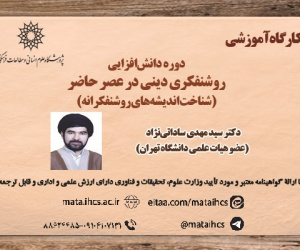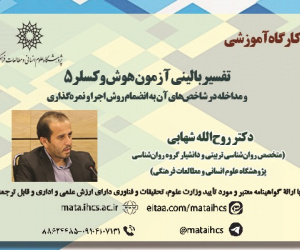واکاوی پیامدها و اثرات، چالش ها و فرصت های فراروی مشاغل غیرکشاورزی در نواحی روستایی با رویکرد تئوری بنیانی، مطالعه موردی: شهرستان کمیجان دهستان وفس (مقاله علمی وزارت علوم)
درجه علمی: نشریه علمی (وزارت علوم)
آرشیو
چکیده
در نیم قرن گذشته، تغییرات عمده ای در طرز تفکر توسعه روستایی رخ داده و توجه به اصل معیشت پایدار روستایی به طور بالقوه در کشورهای درحال توسعه به جهت تلاش برای کاهش فقر در روستاها، مطرح شده است. این درحالی است که در گذشته تمرکز اصلی جهت توسعه روستایی و تأمین معیشت روستاییان تمرکز بر افزایش بهره وری فعالیت های کشاورزی بود. در حال حاضر بسیاری از برنامه ریزان حرکت اقتصاد روستایی به سمت فعالیت های متنوع خارج از مزرعه را موتور محرکه رشد روستایی می دانند. تحقیق حاضر با هدف تبیین چالش ها و موانع فراروی اشتغالات خارج از مزرعه در نواحی روستایی با رویکرد تئوری بنیانی انجام گرفت. نوع تحقیق کاربردی و از نظر ماهیت توصیفی – تحلیلی است. گردآوری داده ها به صورت کتابخانه ای و میدانی با استفاده از ابزار مصاحبه و مشاهده و تجزیه و تحلیل آن ها به روش کیفی با استفاده از نرم افزا Maxqdaانجام شده است. جامعه آماری تحقیق شامل 20 نفر از شاغلین در اشتغالات خارج از مزرعه (صنعت، خدمات و گردشگری) ساکن در 4 روستای سمقاور، وفس، آمره و فتح آباد می باشد، افراد پاسخ دهنده به صورت انتخاب شده یا توصیه شده با مشخصات مشابه بودند. مدت زمان مصاحبه از هر فرد به طور میانگین 15 دقیقه بوده و جریان مصاحبه دارای انعطاف و در خور اهمیت بحث دارای مدت زمان بیشتر یا کمتر بوده است. یافته های تحقیق نشان می دهد که در بخش موانع، افزایش قیمت و دشواری تهیه مواد اولیه و قطعات با 25.8 درصد بیشترین مقدار، در بخش مزیت های موجود احساس نیاز همیشگی به محصولات تولیدی در بازار با 27.1 درصد، در بخش تهدیدهای موجود وجود محصولات شرکتی با قیمت کمتر در بازار با 16.7 درصد و در بخش فرصت های موجود کاهش قیمت ارز، مواد اولیه و قطعات با 14.7 درصد بیشترین مقادیر را داشتند. در آخر نیز مدل پارادایمی فعالیت در مشاغل کشاورزی روستاییان تشریح و علل و شرایط، مفاهیم و پیامدهای آن بررسی شد.A Study of Consequences, Effects, Challenges and Opportunities for Non-Agricultural Jobs in Rural Areas based on Grounded Theory Approach (Case study: Komijan City, Vafs District)
In the last 50 years, there have been major changes in how rural development is conceptualized, and greater attention to sustainable rural livelihoods has been proposed in developing countries to alleviate rural poverty. Currently, many planners posit that the movement of the rural economy towards diverse activities other than agriculture is the driving force of rural growth. This research aimed to explain the challenges and obstacles to off-farm employment in rural areas from a grounded theory approach. This is an applied study that is descriptive-analytical in nature. Data collection was conducted through library study and field surveys including interview and observation tools. Data analysis was conducted qualitatively using Maxqda software. The statistical population consists of 20 people employed in off-farm jobs (industry, services, and tourism) residing in 4 villages of Samqavar, Vafs, Amreh, and Fathabad. The respondents, who were either selected or recommended, had similar characteristics. The interview with each participant lasted 15 minutes on average because the interview process was flexible and depending on the flow of the discussion, its duration varied. According to the findings, growing prices and the difficulty of procuring raw materials and parts gained the highest score among Obstacles (25.8%). The constant need for products in the market (27.1%) among advantages, the availability of company products with a lower price in the market (16.7%) among threats and the decreasing price of currency, raw materials and spare parts (14.7%) among opportunities obtained the highest score. In the end, the paradigmatic model of activities in the agricultural jobs of the villagers is explained and its causes and conditions, concepts, and consequences are explored.







